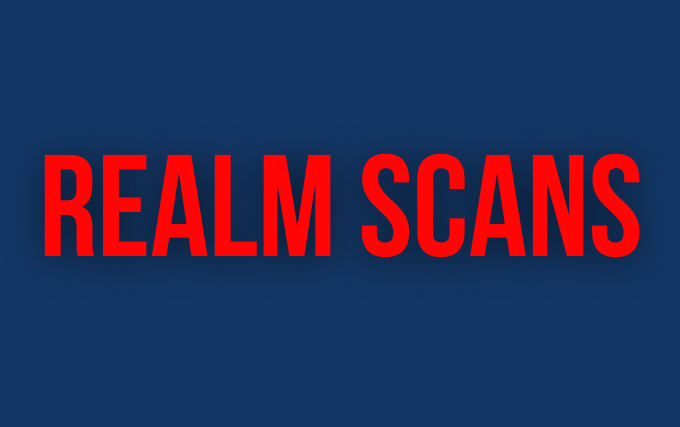Exploring Parallel Worlds The Wonders of Realm Scans
Within the rapidly changing field of technology, the phrase “Realm Scans” has become an intriguing and mysterious idea. Realm Scans are a topic of fascination and wonder due to their origins and range of applications. The purpose of this article is to give a thorough overview of Realm Scans’s by exploring its definition, background, many uses, and technological features.
Understanding Realm Scans
Definition and Basics
The term “realm scan” describes the procedure of gathering, examining, and deciphering data inside a certain realm or domain. This entails using cutting-edge scanning technology to acquire data about a specific place, whether it be virtual or physical. Users can use these scans to generate digital representations of virtual worlds or create 3D maps of real areas.
Historical Evolution
Various technical developments, including the invention of laser scanning, LiDAR (Light Detection and Ranging), and other surveying methods, trace the origins of Realm Scans’s. These technologies have developed over time, resulting in the development of increasingly complex and precise scanning techniques.
Technological Aspects of Realm Scans
Laser Scanning and LiDAR Technology
Laser scanning, which uses laser beams to measure distances and produce precise three-dimensional reconstructions of actual locations, is one of the core technologies underlying Realm Scans. A particular kind of laser scanning called LiDAR uses laser light to measure distances and create incredibly precise maps.
Photogrammetry
Photogrammetry is another important component of Realm Scans’s; it is the process of obtaining three-dimensional information from two-dimensional photographs. Photogrammetry’s adds to the comprehensiveness of Realm Scans’s by integrating many photographs taken from different perspectives to create realistic and detailed 3D models.
Augmented Reality (AR) and Virtual Reality (VR)
Realm Scans’s combination with AR and VR technologies creates new avenues for investigation. Users can create interactive and immersive experiences by submerging themselves in scanned environments. The gaming, architecture, and educational sectors are just a few of the industries that stand to benefit greatly from this convergence of technologies.
Applications of Realm Scans
Urban Planning and Architecture
Realm Scans have completely transformed the design and development process in the fields of architecture and urban planning. Detailed scans are a useful tool for city planners and architects to plan repairs, assess existing buildings, and model the effects of future construction on the surrounding area.
Archaeology and Cultural Heritage Preservation
Realm Scans’s have shown to be quite helpful in the field of archaeology for recording and safeguarding cultural heritage sites. Without requiring physical interaction, researchers may now study and interpret ancient structures and artifacts thanks to the ability to create precise 3D models of archeological sites.
Gaming and Entertainment
The game industry has adopted Realm Scans’s to enhance the realism of virtual worlds. Gamers can have more realistic and immersive gaming experiences by using scanned landscapes and structures. This application extends beyond digital entertainment; it also encompasses virtual film production.
Environmental Monitoring
Realm Scans are an essential component of environmental monitoring, ranging from forestry to land management. Through the collection of comprehensive data on ecosystems and landscapes, scientists are able to monitor biodiversity, evaluate environmental changes, and put conservation plans into action.
Medical Imaging and Healthcare
Healthcare professionals utilize Realm Scans in the field of medical imaging. Methods like virtual reconstructions and 3D medical scans simplify medical education, diagnosis, and surgery planning. Realm Scans offers comprehensive anatomical data that enhances patient outcomes and care.
Challenges and Future Developments
Ethical Considerations
The increased use of Realm Scans raises ethical questions about data security and privacy. Achieving a balance between ethical standards and technology improvements is imperative in order to guarantee acceptable use in diverse industries.
Integration with Artificial Intelligence (AI)
Deeper integration with AI algorithms for data analysis and interpretation may be in store for Realm Scans in the future. AI-driven insights may improve the effectiveness and precision of scanning procedures, creating new avenues for on-the-spot decision-making across a range of industries.
Standardization and Interoperability
Standardization and interoperability between scanning systems are crucial for Realm Scans’s to reach their full potential. Collaboration and the smooth integration of scans across many platforms will be facilitated by the establishment of standard frameworks and formats for data interchange.
Advancements in Sensor Technologies
Realm scans will be more accurate and have higher resolution as long as sensor technologies, such as LiDAR and laser scanning devices, continue to grow. The accuracy and caliber of the 3D models that are produced will be significantly improved by these advancements.
Conclusion
Realm Scans are an intriguing example of how multiple technologies are combining, with a plethora of opportunities for diverse businesses. Users employ Realm Scans across various fields, ranging from healthcare to urban planning, reshaping our perspectives and interactions with the environment. As technology advances and ethical considerations come into play, we anticipate witnessing further captivating breakthroughs in the realm of Realm Scans in the future. Unquestionably, embracing this technological frontier will open up new avenues for innovation and discovery..
